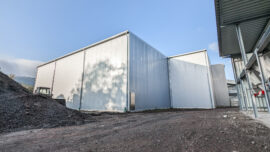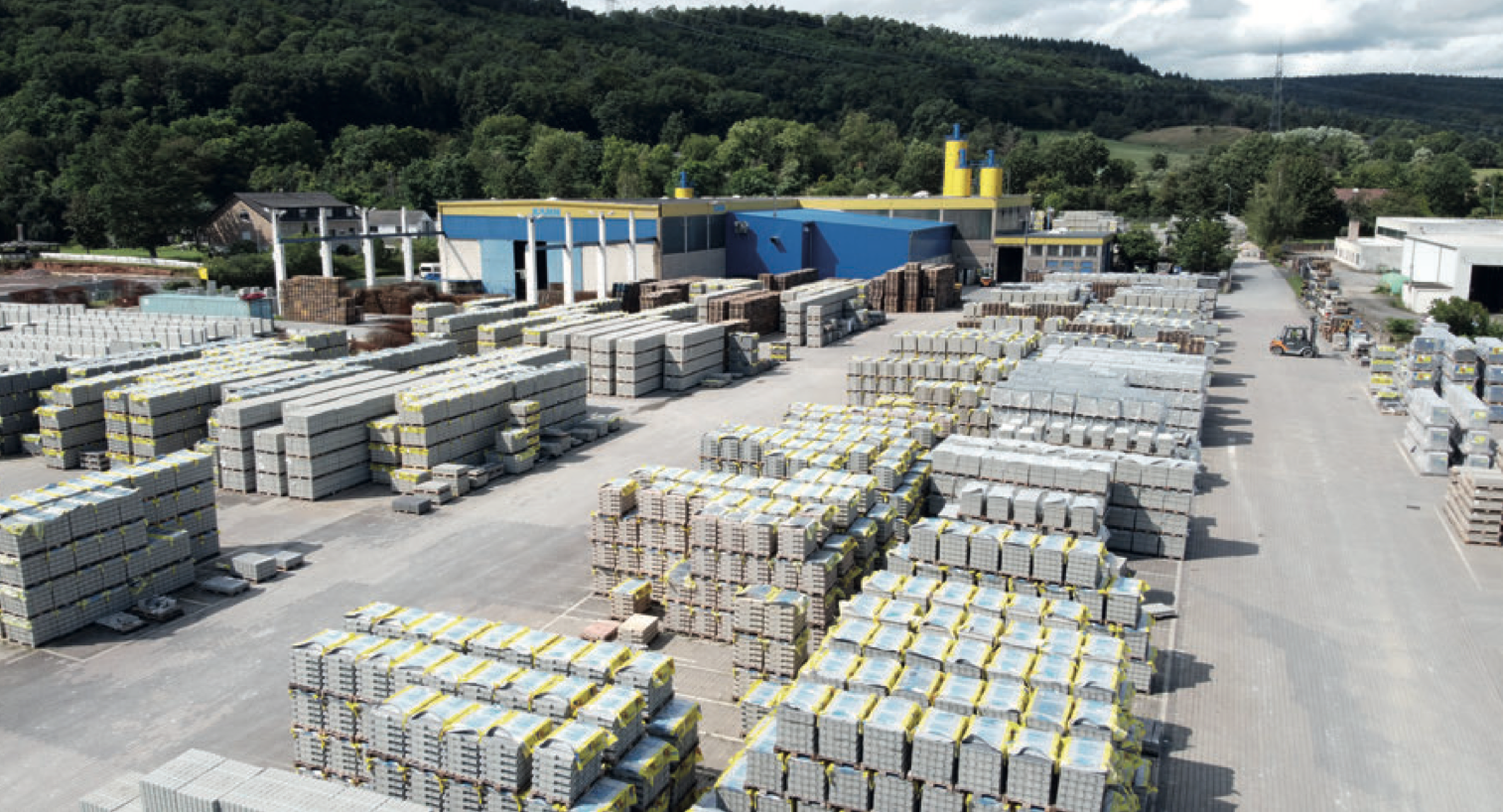
Kann GmbH invests in the future with a modern curing chamber
(Article in CPI – Concrete Plant International – 5 | 2021)
Kann GmbH Baustoffwerke, with its headquarters in Bendorf-Mühlhofen and a total of 20 other locations spread throughout Germany, has been making a name for itself as a manufacturer of high-quality concrete products since its foundation in 1927. Starting with a small selection of pumice construction materials, the group nowadays sup- plies one of the widest ranges of pavers, slabs and garden blocks. The company is continuously expanding its product portfolio while meeting customers’ increasing quality expectations through constant investment in new systems technology as well as the future-oriented, targeted development of new products.
In the winter of 2021, such investment included the modernisation of the existing curing chamber at the company’s Schweich production facility. The concept development plus construction and modification of the production facility were carried out by Kraft Curing Systems GmbH, from Lindern, Germany, who can already look back on several years of successful cooperation with the Kann Group. Both companies are very sustainability focused and future-oriented, which has made their joint project work much easier.
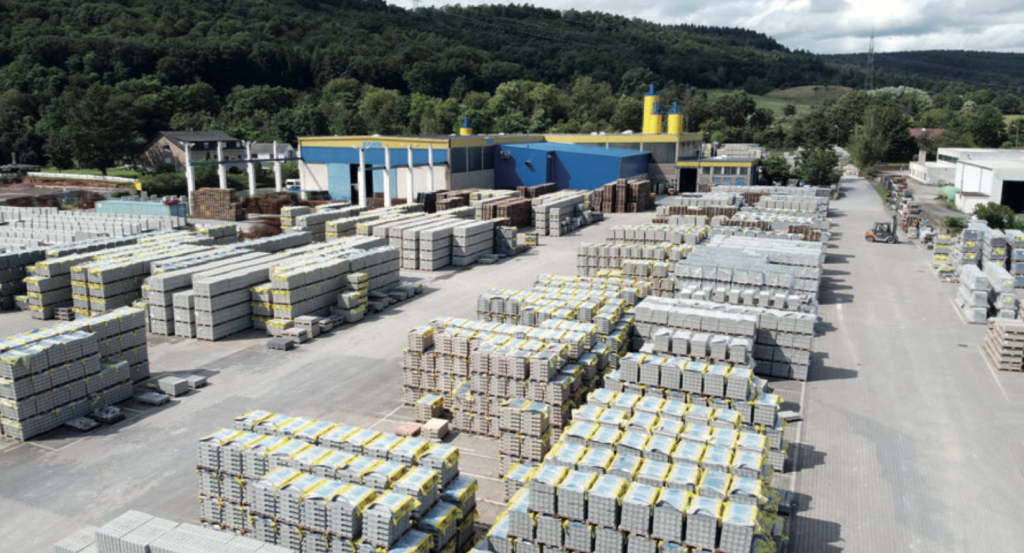
At the Schweich site, paving stones, kerbstones and angle blocks are manufactured and refined. The factory itself was built in the 1970s and taken over by the Kann Group at the beginning of the 1980s, thus securing sales to neighbouring countries.
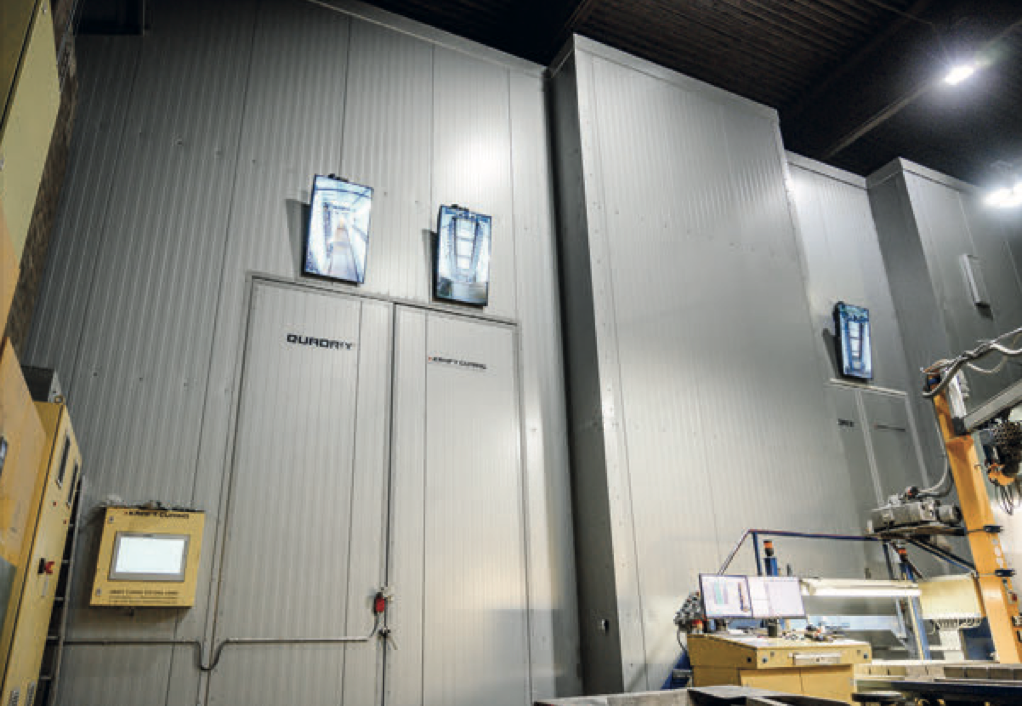
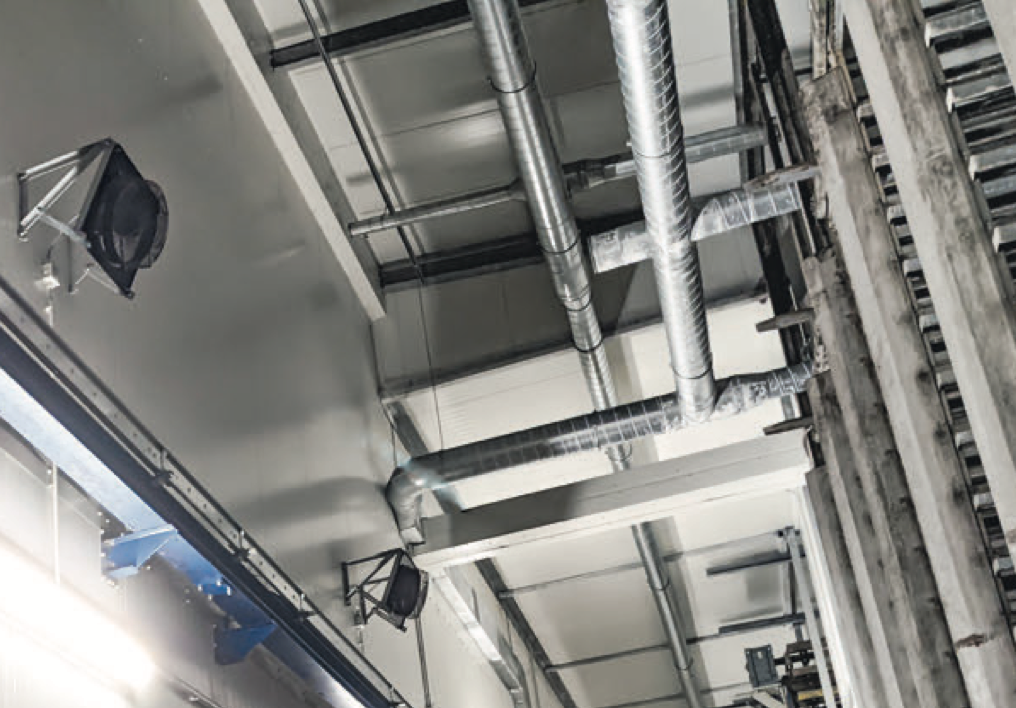
Before the investment in new curing technology, the site was experiencing colour differences in concrete products that were due to inconsistent curing conditions. Temperatures fluctuate more strongly in insufficiently insulated chambers, and, if corresponding air circulation is lacking, the differences are not just seasonal but are also clearly noticeable within the chamber. Warm air rises to the top and so that the depth of colour in the upper rack areas differs from the lower layers. Sometimes the heat from hydration was as well insufficient to heat the chamber to the required temperature. This meant that products might have to remain in the chamber longer than planned in order to achieve the early strength desired.
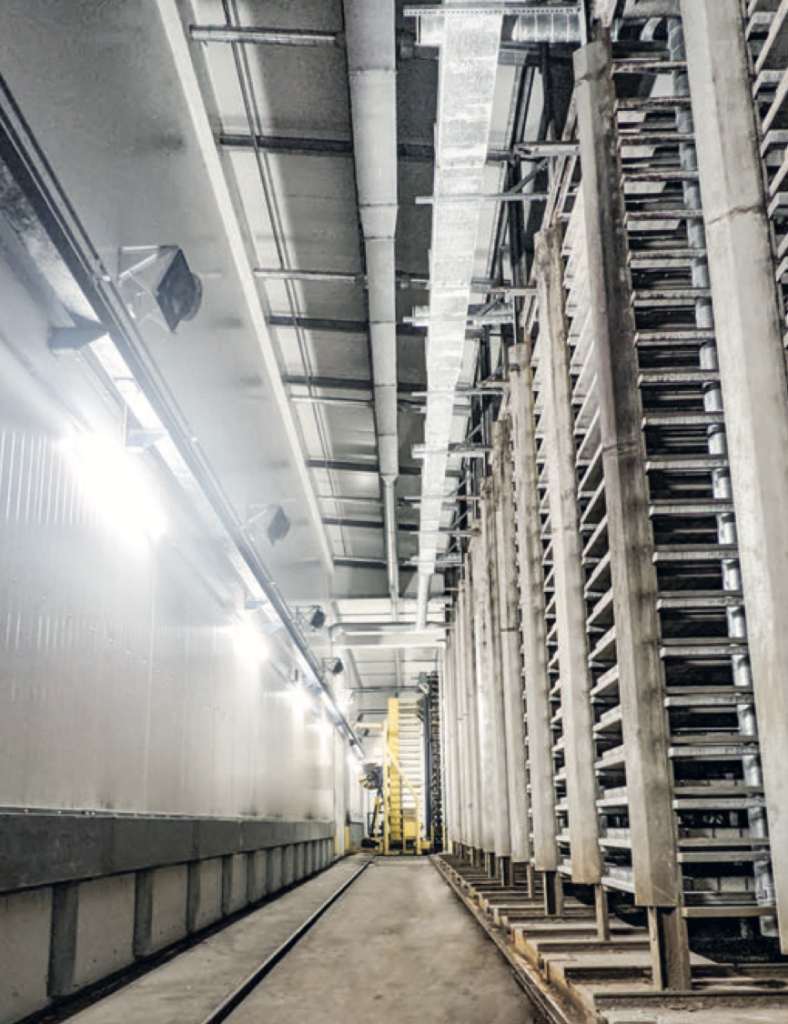
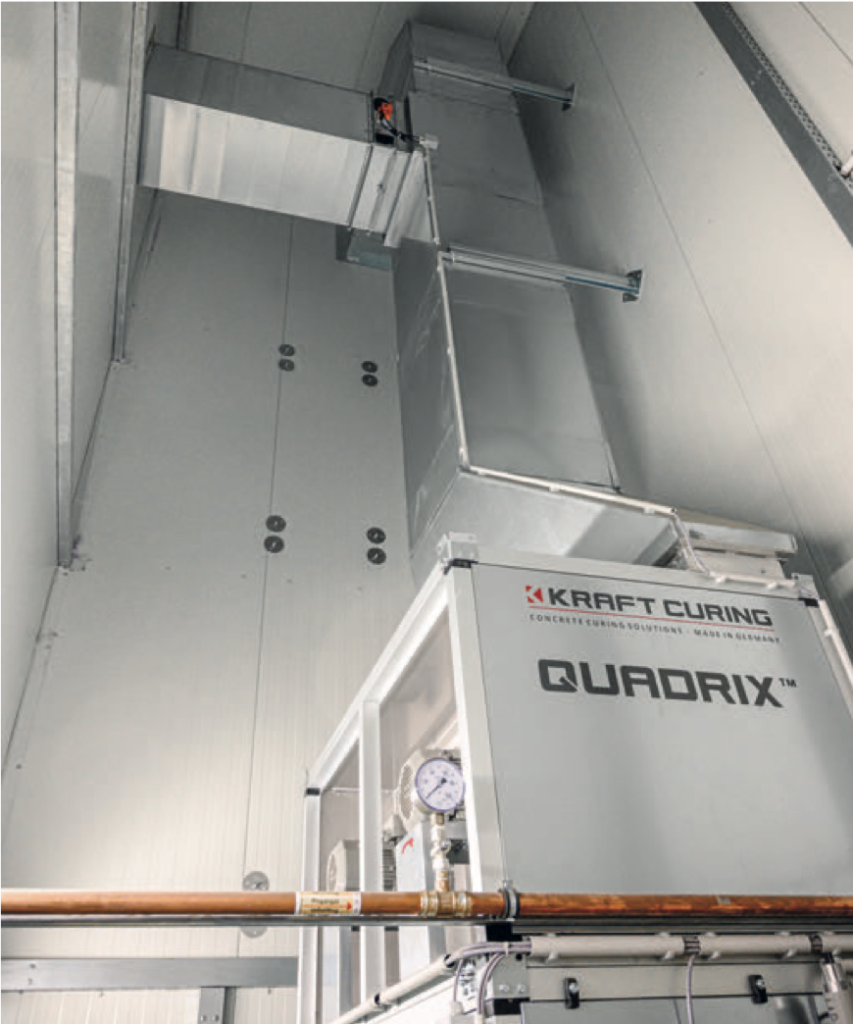
For the above reasons, Kann decided to expand and retrofit the old chamber up to the latest technical standards. The specification included completely insulating the existing rack system with PU panels, introducing heat and humidity into the chamber and ensuring uniform air circulation. Having years of experience in such conversions, Kraft Curing Systems GmbH was commissioned by Kann with the project’s implementation. The only time available for the installation was February 2021, which posed a great challenge for the technology supplier as well as for the customer. The conversion, including the dismantling of some old components, had to be organised with a correspondingly high number of assembly teams. In addition, the Corona-Virus problem, including local restrictions, complicated the course of the project. Contact between the individual teams was kept to a minimum.
Kann GmbH provided the Kraft Curing employees with their own common rooms and sanitary facilities. The cold temperatures in February made the installation even more difficult. Yet, thanks to the professional cooperation of the two project partners, the investment was successfully completed within the planned timeframe.
A Quadrix system, which generates warm air and conducts it through a duct system into the chamber, was supplied. Connected to this system is a cutting-edge humidification unit, which gives additional moisture into the warm air duct. The warm, humid air is then distributed in the chamber via dampers, sucked back in at the top via return ducts and fed into the Quadrix system for reprocessing. The unit also has an extraction system especially developed by Kraft that is activated when the moisture level is too high and draws moist air out of the chamber. Depending on its setting, the system decides autonomously whether it draws in fresh air via dampers or continues to use the existing air in the chamber. Information about the heat/moisture content is provided by sensors developed for the application and mounted throughout the entire chamber. The number of sensors required was deter- mined in a preliminary discussion with the customer.
It is important that the warm, humid air is evenly distributed and that the chamber is very well thermally insulated. Only in this way can the system supplied by Kraft achieve the agreed tolerances of ± 3 % with regard to humidity and ± 1 °C chamber temperature without seasonal limitations. While several options are available as an energy source for heating the air, Kann was very interested in sustainable solutions, which once again underlined the basic attitude of both companies to the topic.
Since there was no space in the hall to install the new technology, the curing system supplier constructed an additional technical room made of PU panels on the rear side of the chamber. This room now houses the Quadrix air heating system and the humidification unit called AutoFog. At the customer’s request, the exterior panels were supplied in the colours of Kann’s corporate design, making the conversion an eye-catcher even from a distance.
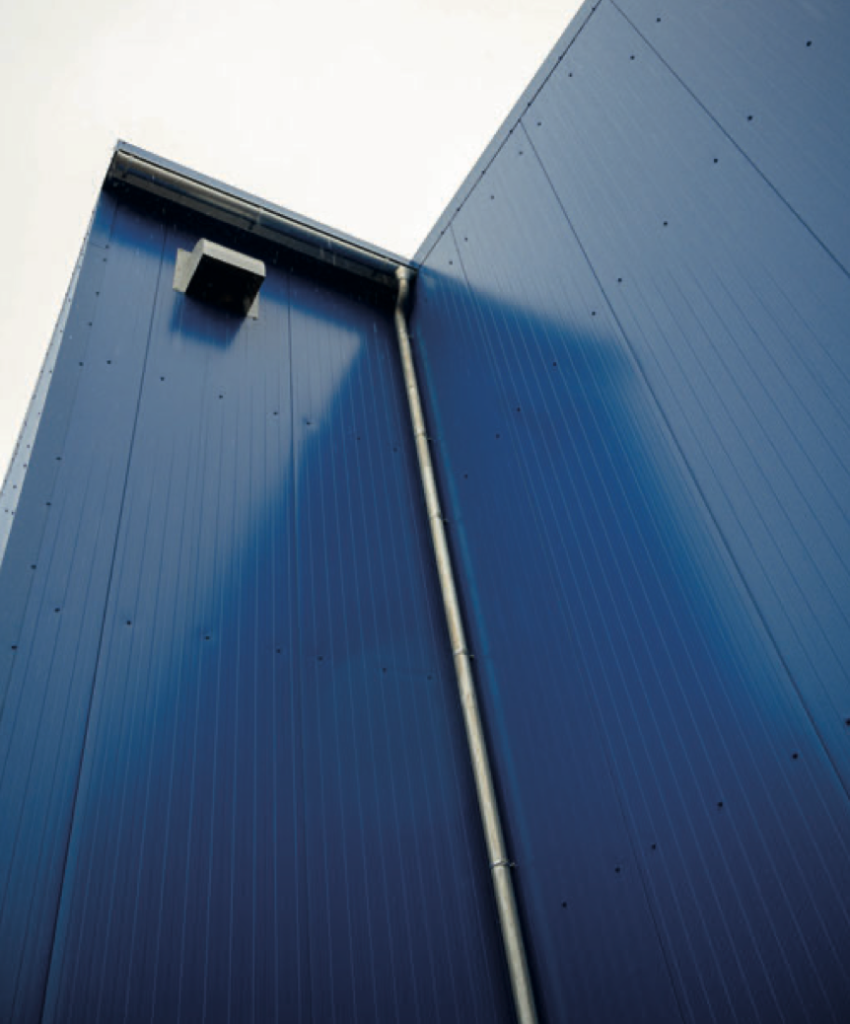
A few weeks after successful commissioning, a joint follow-up meeting was held to coordinate the fine-tuning of the system and to discuss the experience of factory manager, Mr Hans-Georg Neufang, in Schweich in operating the new system technology.
Mr Neufang was very satisfied with the execution and installation of the system by Kraft Curing Systems GmbH. He found the technical implementation, short decision-making processes and the communication in general to be very good. He was impressed that an installation of this magnitude could be carried through in such a short time, under such condi- tions. He was also surprised at how much time was invested in installing and optimising the sealing of the PU panels alone. “That’s what I call attention to detail, and it shows that the employees know their trade,” said the resident factory manager. He felt very well looked after throughout the entire process and even when unexpected obstacles had to be overcome, they were dealt with jointly and cleared out of the way.
Currently, the production facility in Schweich is running the curing chamber at temperatures above 30 °C and over 85 % humidity and is slowly approaching the optimum value for the system. This opens up the possibility, if used as an option, for the customer to take products from the early shift out of the chamber again during the late shift. Uniform curing conditions ensure consistent quality, regardless of the season, and the possibility of producing the entire product range unerringly even at low outside temperatures. If three-shift operations are planned in future at the Schweich site, they can be implemented with the new plant technology almost without expanding the curing chamber and without purchasing additional production boards.









